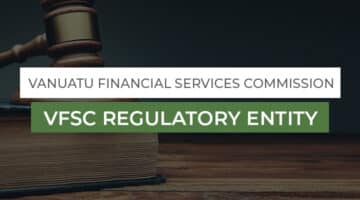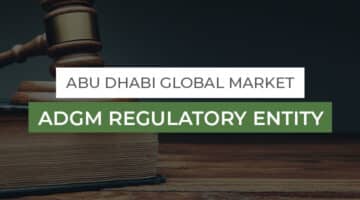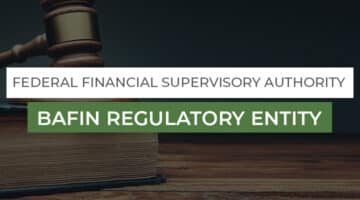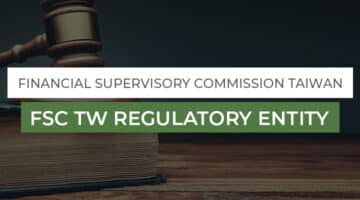FMA New Zealand Regulatory Entity

In this article
FMA is the abbreviation of Financial Market Authority. The Financial Markets Authority is playing a significant role in the capital markets and the financial services in New Zealand. In short, it acts as the government agency which is responsible for performing some major financial regulations.
It regulates all the participants involved in the financial market, exchanges or the settings, and the enforcement of financial regulations.
Financial reporting, enforcing securities, and company law somehow apply to the financial services and the securities markets. It even regulates the securities exchanges and financial advisers and brokers along with issuers and trustees.
This might even include the issuers of KiwiSaver and the superannuation schemes. In simple words, FMA and the Reserve Bank of New Zealand (RBNZ) have been jointly designated to regulate settlement systems within the country.
History
FMA started functioning on 1st May 2011. This regulatory entity was also part of the Financial Markets (Regulators and KiwiSaver) Bill. The bill was passed on 7th April 2011 by the New Zealand Parliament. Its primary purpose was to wake the certain criticism on top of the failure being faced in the previous regulatory regime. Nevertheless, the previous regulator had already failed to support people who were part of the finance companies and the stem investor losses. This happened from 2006 to 2010.
FMA was later on formed as the Independent Crown Entity. In 2014, they started working under the mandate, which was wider by introducing the Financial Markets Conduct Act 2013. In addition, they also have some extended regulatory tools for achieving successful results for the financial market professionals, investors, and businesses.

Above all, Commerce Minister Simon Power even introduced FMA as the entity of “super-regulator.” Its main aim was to restore investors’ confidence, which is shattered due to the meltdown of his finance company or anyone who is facing a global financial crisis.
In addition, FMA is also performing the Securities Commission of New Zealand functions and as the Government Actuary, which was previously disestablished. The FMA regulatory entity is even consolidating a few more regulatory functions, yet fragmented all across the Ministry of Economic Development (New Zealand). This will include the areas of the Companies Office and its ongoing National Enforcement Unit.
How does the FMA regulate or function?
The regulatory functions of FMA are supporting all its strategic priorities. A few of its essential functions are:
- Works in supervising and monitoring the investor confidence where it assesses and even monitors compliance. It even conducts and assesses the competency of the market participants.
- FMA has a significant role to play in enforcement and investigations. First, it raises the confidence of the investor by taking some timely and yet proportionate enforcement action. Plus, it even seeks compensation for the investors where it is suitable.
- The entity provides the basic information and proper guidance for assisting the professionals and forms in complying with law actions.
- Licenses are awarded to professionals or firms who meet the basic requirements of law.
- It gets into partnership with the private and public organisations for developing and promoting educational resources. This is how investors will be able to make some better and vast investment decisions.
Structure of FAM regulatory entity
For overseeing FMA, a board is generally appointed under the supervision of the Minister of Commerce. The whole organisation is led by Chief Executive Rob Everett, who runs FMA, and Mark Todd, the Board Chairman. The whole team is aiming to protect the economy and the financial sector.
Through the FMA team, constant development is expected among the employees by providing technical and non-technical learning for high growth. It even regulates the securities exchanges and financial advisers and brokers along with issuers and trustees. This might even include the issuers of KiwiSaver and the superannuation schemes. However, few significant development opportunities are also provided which are meaningful to their future and current contributions at the FMA.
7 priority areas in FMA
FMA is based on 7 major strategic priority areas. This is including:
- Governance & culture
- Conflicted conduct
- Capital market growth & integrity
- Sales & advice
- Investor decision-making
- Effective frontline regulators
- Effectiveness & Efficiency
Markets, businesses, and professionals are a few of the major entities which the FMA regulates. They are regulated either through authorisation or through direct licensing. Hence, it includes all those registered or licensed by a few other agencies and are subjected to the elements of specific laws they enforce. They take vast interest in a few other products which are linked with the financial markets.
One of its significant sectors is retail products and service providers registered or licensed by others. This includes banks, insurers, or foreign exchange providers. In addition, it even involves the regulation of advisers and the Discretionary Managers where they are registered or licensed by the Registered Financial Advisers (RFAs).
Role of FMA in an integrated financial system
Being a risk-based regulator, FMA regulatory entity is identifying all the risks and is responding accordingly to minimise the harm of all investors. All they are aiming for is to protect the economy and the financial sector. FMA intends to support the transition in an integrated financial system through:
- promotion and facilitator of market development
- promotion of confidence and trust inside the capital markets
- supporting all the informed investors for a decision-making process
Numerous financial sector entities are well-advanced in the social, natural, and human capital impacts. As the change is accelerated, FMA’s key role is to support the transition by simply providing guidance and clarity on what you expect from financial sector entities.
FMA is working closely with different local agencies to ensure a coordinated approach and keeping pace with the latest international thinking. This is possible through solid relationships with the rest of the peer regulators who are offshore.
Bottom line
To sum up the discussion, FMA aims to facilitate and promote efficient and transparent financial markets. Accordingly, they use all enforcement powers to target the conduct that presents the greatest likelihood to function in open and efficient capital markets.
Jason Morgan is an experienced forex analyst and writer with a deep understanding of the financial markets. With over 13+ years of industry experience, he has honed his skills in analyzing and forecasting currency movements, providing valuable insights to traders and investors.
Forex Content Writer | Market Analyst
Relevant Posts

CMVM Regulatory Entity
[top_three_brokers] The CMVM is a forex broker company set up in Portugal that provides financial…
Read more

PRA Regulatory Entity
[top_three_brokers] PRA stands for Prudential Regulation Authority. It works as a regulatory and supervisory authority…
Read more

SEC Regulatory Entity
[top_three_brokers] SEC stands for US Securities and Exchange Commission, an independent regulatory agency supervised by…
Read more

SIBL Regulatory Entity
[top_three_brokers] The Social Islamic Bank Ltd (SIBL) is a top-leading and renowned second-generation commercial bank…
Read more

VFSC Regulatory Entity
[top_three_brokers] The Vanuatu Financial Services Commission is a regulatory organisation that supervises and regulates Vanuatu's…
Read more

ADGM Regulatory Entity
[top_three_brokers] ADGM is the abbreviation of Abu Dhabi Global Market. It is an award-winning centre…
Read more

BaFin Regulatory Entity
[top_three_brokers] A German Financial Authority, Bundesanstalt für Finanzdienstleistungsaufsicht, is abbreviated as BaFin, known as Federal…
Read more

FSPR Regulatory Entity
[top_three_brokers] The Financial Service Providers Register is a regulatory entity that has authority over financial…
Read more

MAS Regulatory Entity
[top_three_brokers] Internationally, the Monetary Authority of Singapore (MAS) has long been considered the gold standard…
Read more

FSC Taiwan Regulatory Entity
[top_three_brokers] The Financial Supervisory Commission, FSC, is an independent authority body in Taiwan. Taiwan's financial…
Read more

CMVM Regulatory Entity
[top_three_brokers] The CMVM is a forex broker company set up in Portugal that provides financial…

PRA Regulatory Entity
[top_three_brokers] PRA stands for Prudential Regulation Authority. It works as a regulatory and supervisory authority…

SEC Regulatory Entity
[top_three_brokers] SEC stands for US Securities and Exchange Commission, an independent regulatory agency supervised by…

SIBL Regulatory Entity
[top_three_brokers] The Social Islamic Bank Ltd (SIBL) is a top-leading and renowned second-generation commercial bank…

VFSC Regulatory Entity
[top_three_brokers] The Vanuatu Financial Services Commission is a regulatory organisation that supervises and regulates Vanuatu's…

ADGM Regulatory Entity
[top_three_brokers] ADGM is the abbreviation of Abu Dhabi Global Market. It is an award-winning centre…

BaFin Regulatory Entity
[top_three_brokers] A German Financial Authority, Bundesanstalt für Finanzdienstleistungsaufsicht, is abbreviated as BaFin, known as Federal…

FSPR Regulatory Entity
[top_three_brokers] The Financial Service Providers Register is a regulatory entity that has authority over financial…

MAS Regulatory Entity
[top_three_brokers] Internationally, the Monetary Authority of Singapore (MAS) has long been considered the gold standard…

FSC Taiwan Regulatory Entity
[top_three_brokers] The Financial Supervisory Commission, FSC, is an independent authority body in Taiwan. Taiwan's financial…

